Lijiang is one of the most famous ancient towns in China, and its beauty varies with the seasons. However, the fall season is when it’s at its most captivating, with the entire space covered in the golden and red hues of ginkgo and maple leaves.
Shangri-La, on the other hand, sits on a plateau 3,300 meters above sea level and is surrounded by lush green hills and breathtaking lakes, along with fresh air.
Many Vietnamese travel companies offer packaged tours to Lijiang and Shangri-La. However, independent travelers like Ms. Nguyet Moon (29 years old, from Hanoi) chose to explore these destinations on her own, allowing her to create a customized itinerary.
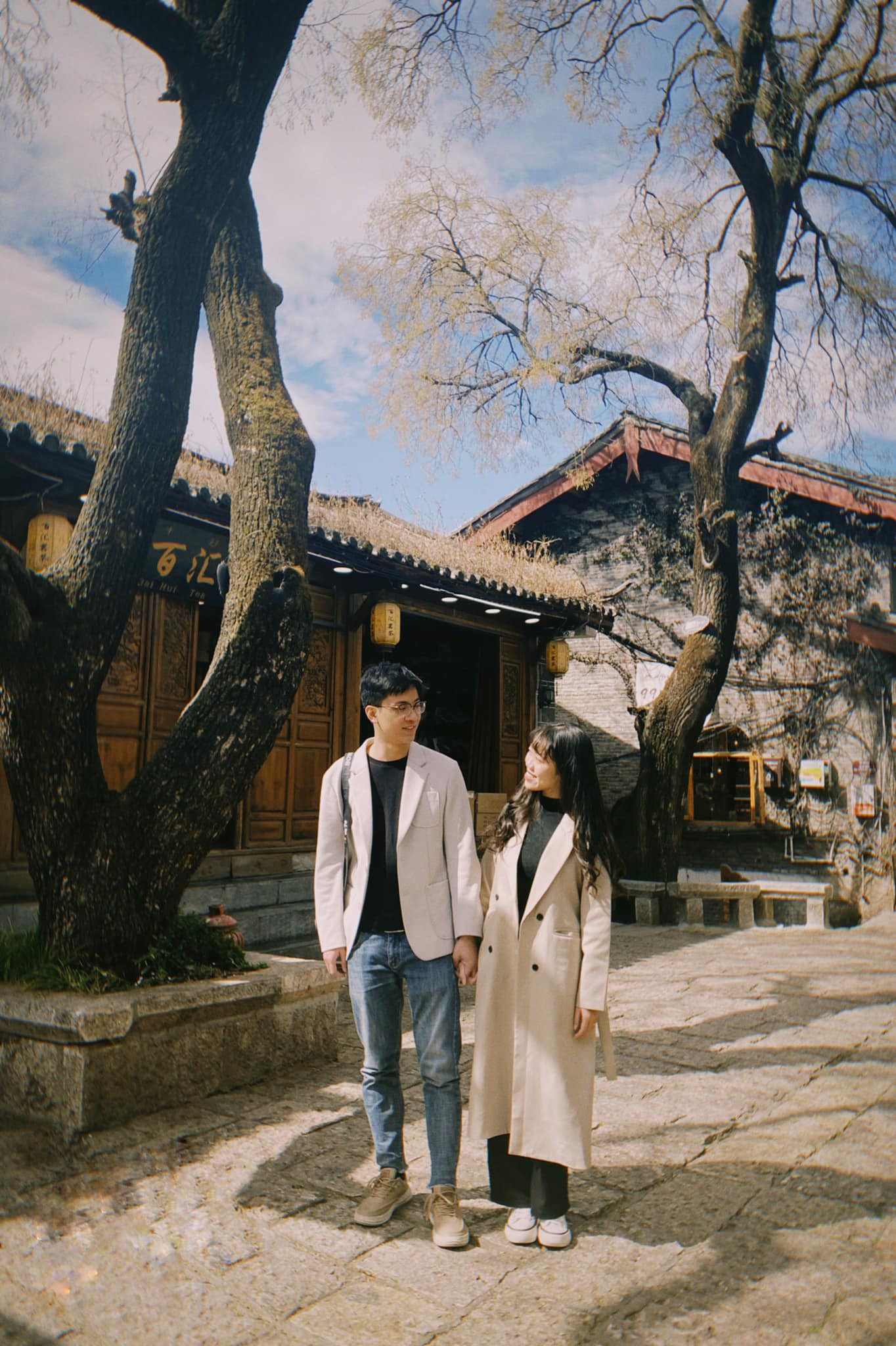
Ms. Nguyet and her husband chose to travel to Lijiang and Shangri-La independently.
Ms. Nguyet and her husband visited Lijiang and Shangri-La in March. Although she had wanted to explore the region in the fall, time constraints led them to opt for a spring visit. The benefit of independent travel was that they could take their time and fully appreciate the places they loved.
The most significant obstacle they faced was the language barrier, as they didn’t know Mandarin. This made them hesitant to forgo a tour and travel independently.
“After considering various tours but not finding one that suited our preferences, we decided to go on our own. I installed translation apps like Google Translate and WeChat and joined the Xiaohongshu social network. I also set up a digital wallet with Alipay,” shared Ms. Nguyet.
Pre-trip Preparations
According to Ms. Nguyet, the most crucial aspect of independent travel is researching and planning your itinerary in detail. She spent almost a month reading travel blogs and gathering information relevant to her trip.
She meticulously planned each day, deciding where to go, how to get there, and how long it would take. “We didn’t want to rush from one attraction to the next, exhausting ourselves. Instead, we wanted to savor and immerse ourselves in the scenery,” she explained.
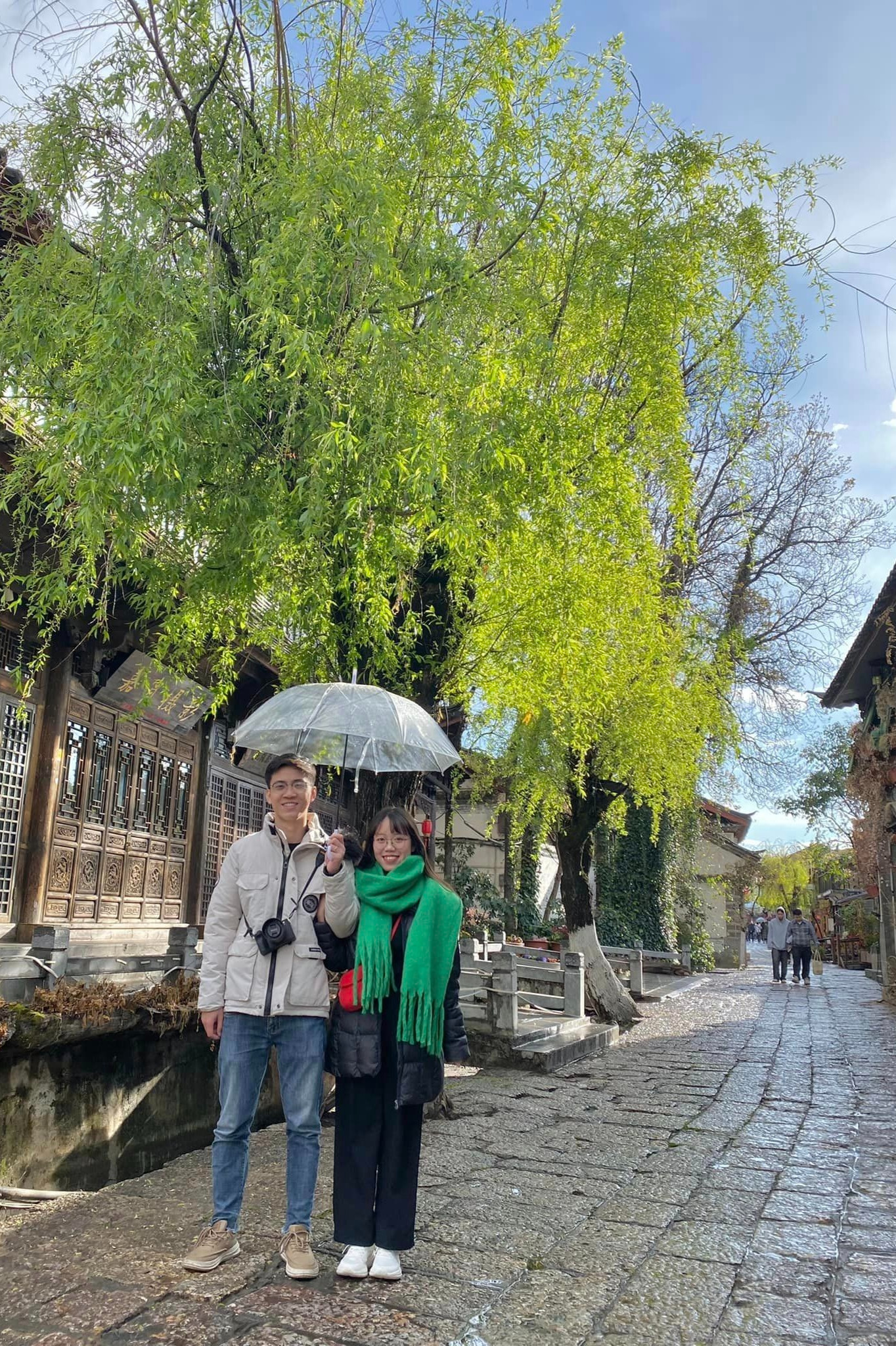

The couple wanted a relaxed trip to enjoy the scenery.
Regarding visas, instead of hiring an agent, Ms. Nguyet handled the process herself. The required documents included: a passport valid for at least six months; copies of air tickets and hotel bookings; a completed visa application form; a copy of the passport’s information page; and two 4 x 6 cm photos with a white background.
She submitted her application at the Chinese Visa Application Service Center in Hanoi, paying a service fee of VND 690,000. “The document verification and submission process was quick. They informed me of the date to pick up my passport with the visa. If the visa was approved, I had to pay an additional VND 1,000,000. Thankfully, they didn’t ask for proof of financial capability or income,” she added.
Ms. Nguyet also purchased a Chinese tourist SIM card in Vietnam, booked accommodations and train tickets for the entire trip, and loaded money into a popular Chinese digital wallet app. Additionally, she packed heat pads, medications, and instant noodles in her luggage, along with her clothes.
Itinerary
On the first day, the couple traveled from Hanoi to Lao Cai by sleeper bus, costing VND 600,000 per person for a round trip. The journey took about five hours. From the bus station, they took an electric bus to the border gate, had breakfast, and queued to complete the exit and entry procedures.
After entering Ha Khau, the couple had lunch and headed to the train station, from where they took three trains to reach Lijiang. “The journey was quite long, about 10 hours, but the Chinese trains are comfortable, and we slept well,” Ms. Nguyet recalled.
At 7:30 am the next morning, they arrived at Lijiang Station and took a taxi to their hotel. The hotel was conveniently located near the main road, making it easier to get around without lugging their suitcases too far. The room cost VND 520,000 per night for two people.
They spent three days exploring Lijiang. On the first day, they mostly strolled through the ancient town, taking their time to discover charming cafes.
Recognized as a UNESCO World Heritage Site since 1997, the ancient town of Lijiang has maintained its authentic charm. It is considered a model for harmonious and sustainable tourism development in an ancient town where people still reside.

According to Ms. Nguyet, the ancient town of Lijiang is peaceful in the morning.
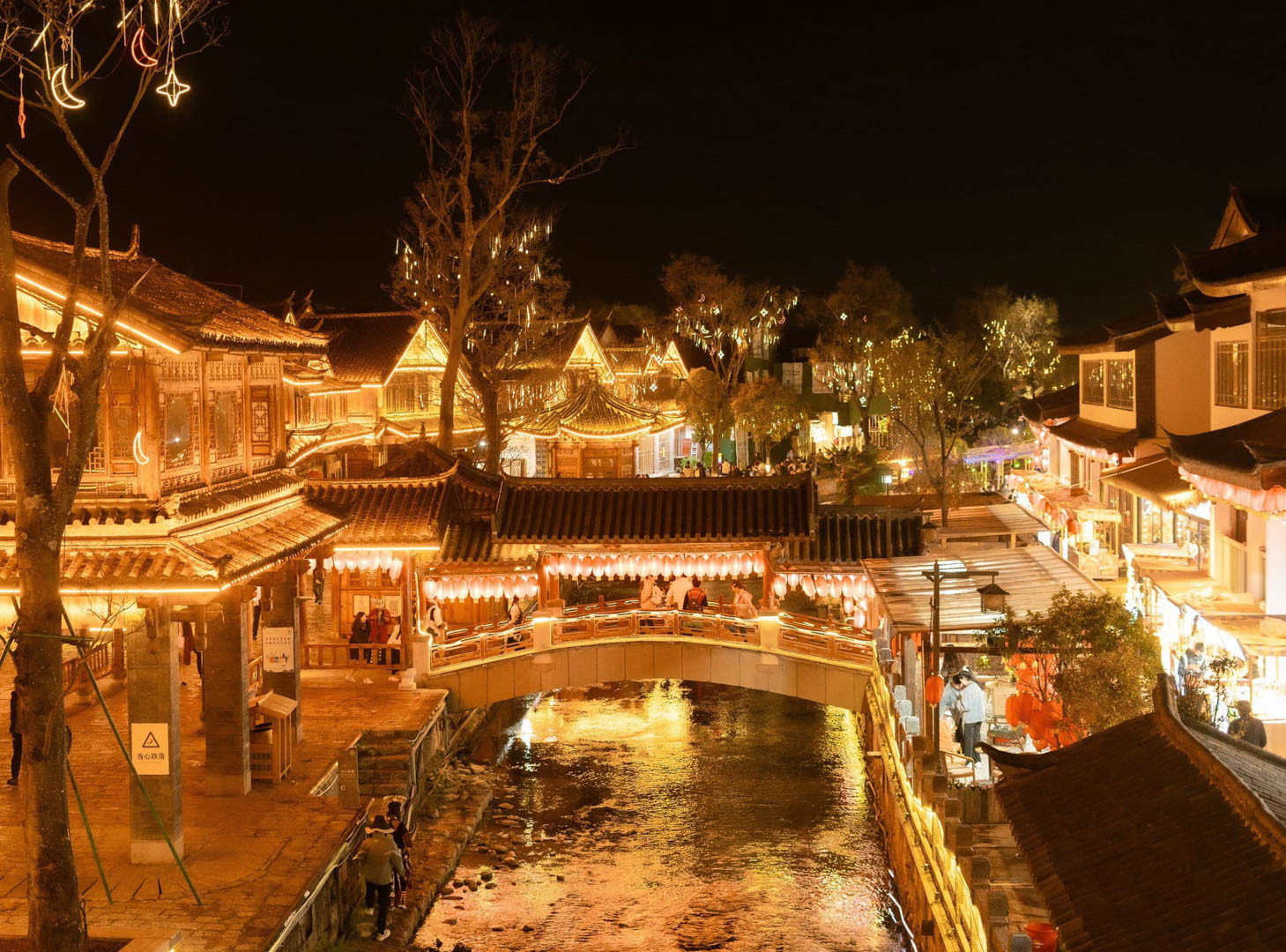
In the evening, the town comes alive with illuminated shops and bustling tourists.
On the second day, the couple booked a local tour to Jade Dragon Snow Mountain. They opted for the package that included scaling the 3,500-meter peak, providing them with coats, personal oxygen tanks, transportation, entrance fees, lunch, and tickets to the ‘Impression Lijiang’ show. The cost was CNY 460 (approximately VND 1,600,000) per person.
The journey began at 5:00 am while it was still dark and cold, but the early start offered the opportunity to witness the sunrise. Upon reaching the snow mountain, they queued for the cable car, which provided breathtaking views of the snow-capped mountain surrounded by lush vegetation, including rare trees like cypresses, pines, and cloud pines.

‘Impression Lijiang’ is an impressive outdoor performance.
“The ideal itinerary is to reach the peak and return for lunch, then watch the ‘Impression Lijiang’ show at 1:00 pm before proceeding to Blue Moon Valley to admire the beautiful lake. If you visit in spring like we did, ask the tour operator to include Snow Mountain Road, famous for its cherry blossoms,” suggested Ms. Nguyet.
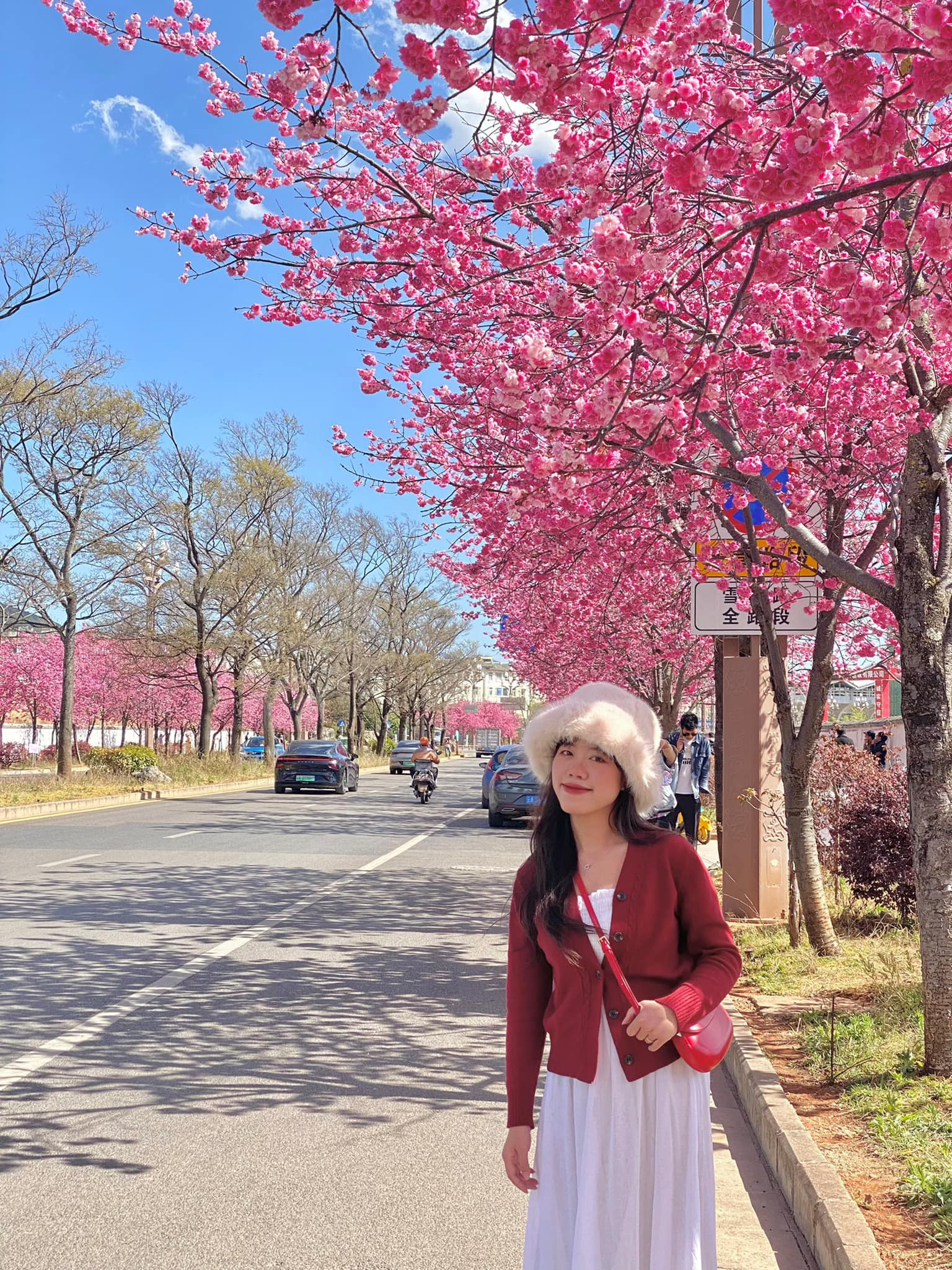
Snow Mountain Road is lined with blooming cherry blossoms.
A hiccup during this tour was that neither the guide nor the driver spoke standard Mandarin, so the translation apps couldn’t interpret what they said. Ms. Nguyet had to contact the hotel owner, who kindly acted as an interpreter.
The following day, the couple visited Mu Palace. This mansion of the Mu family covers an area of 46 mu (approximately 30,660 square meters) and consists of 162 large and small rooms. “Being there made me feel like I had stepped back in time to the era of ‘Princess Returning Pearl,’ a popular TV series,” Ms. Nguyet remarked.
In the afternoon, they took a two-hour train to Shangri-La. Unfortunately, it rained heavily on their first day there, so they canceled their plans to visit Potatso Park. Instead, they wandered through the streets, enjoying local delicacies and coffee.
“Using an app, I found a cafe next to Napa Lake with stunning views of the grassland, lake, and Mayili Snow Mountain in the distance. It was absolutely breathtaking,” Ms. Nguyet described.
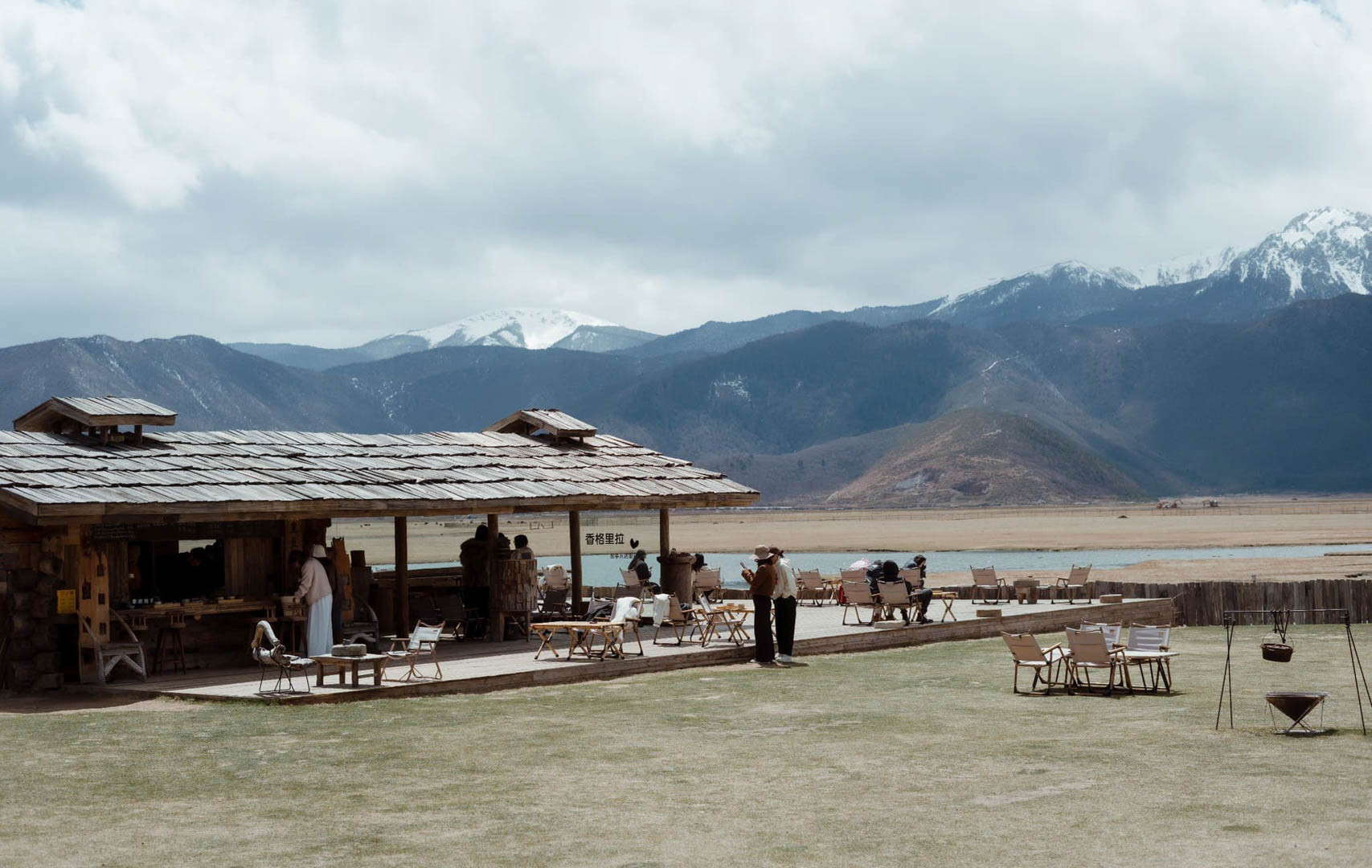
The cafe by Napa Lake boasts a beautiful design. According to Ms. Nguyet, the drinks and accommodation are pricey but worth it for the ambiance.
In the afternoon, the couple visited Songzanlin Monastery, located more than 3,300 meters above sea level and covering an area of over 30 hectares. Despite the vicissitudes of history and the ravages of time, the monastery has been restored after being destroyed several times.
The monastery is a unique architectural complex resembling a five-story watchtower, with various structures forming a unified whole. It features golden-roofed red walls, characteristic of ancient temple architecture, adorned with intricate carvings of folk culture and beliefs.
“The place is stunning but can get crowded. To explore it thoroughly, plan to spend the entire day there,” Ms. Nguyet advised.
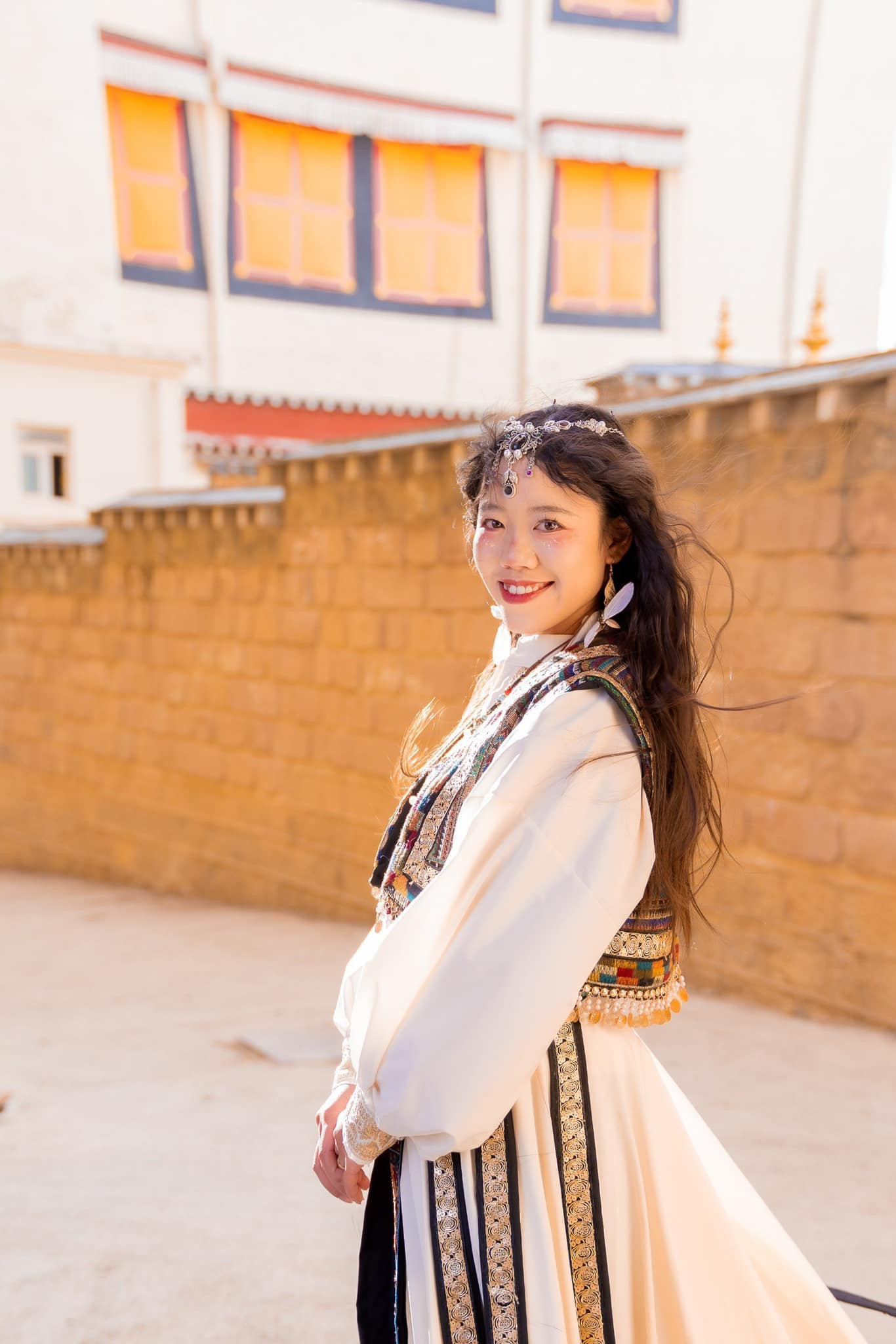


The monastery offers affordable costume rental and makeup services, costing less than VND 300,000 per person.
The next day, the couple visited Potatso Park, the “green heart” of Shangri-La, spanning over 1,300 square kilometers and boasting a diverse and rich ecosystem. “It’s at its most beautiful in autumn. Getting around the park by car can be a bit nauseating due to the winding roads,” Ms. Nguyet noted.
On their last day in Shangri-La, they strolled through the city, exploring picturesque parks in the center and sampling local cuisine. After lunch and a rest, they headed to the train station, taking a five-hour train to Kunming and then returning to Ha Khau by train.
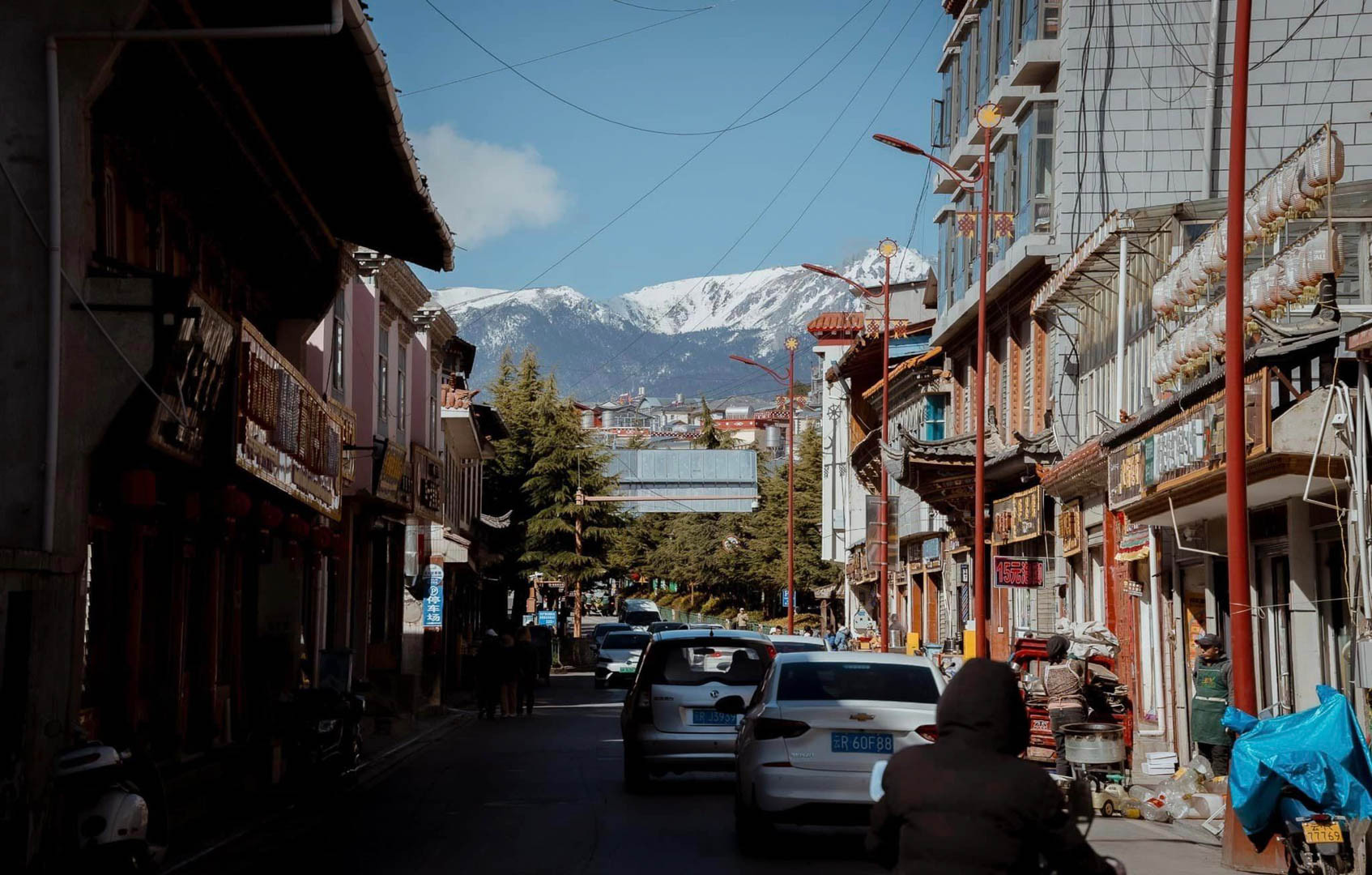
A street corner in Shangri-La
Some Notes
Ms. Nguyet booked accommodations and train tickets through the Trip.com app. She noted that not all hotels on the platform accept foreign guests, so it’s essential to message the customer support team to confirm. It’s also helpful to get the hotel’s WeChat ID for easier communication.
Regarding train tickets, while you can buy them at the station, they may be sold out or only have standing room left. To ensure comfortable seating, Ms. Nguyet recommended booking in advance. “You can purchase a maximum of five tickets at once, but they are randomly assigned. If you book a sleeper berth, you might end up in different compartments,” she explained.
Concerning food, the couple didn’t care much for Chinese cuisine. Ms. Nguyet’s favorite dish was grilled sausage sprinkled with chili powder.
“Before the trip, I was worried about the language barrier and the possibility of scams or other issues. However, I was pleased with the beautiful scenery, fresh air, and friendly locals,” shared the traveler.
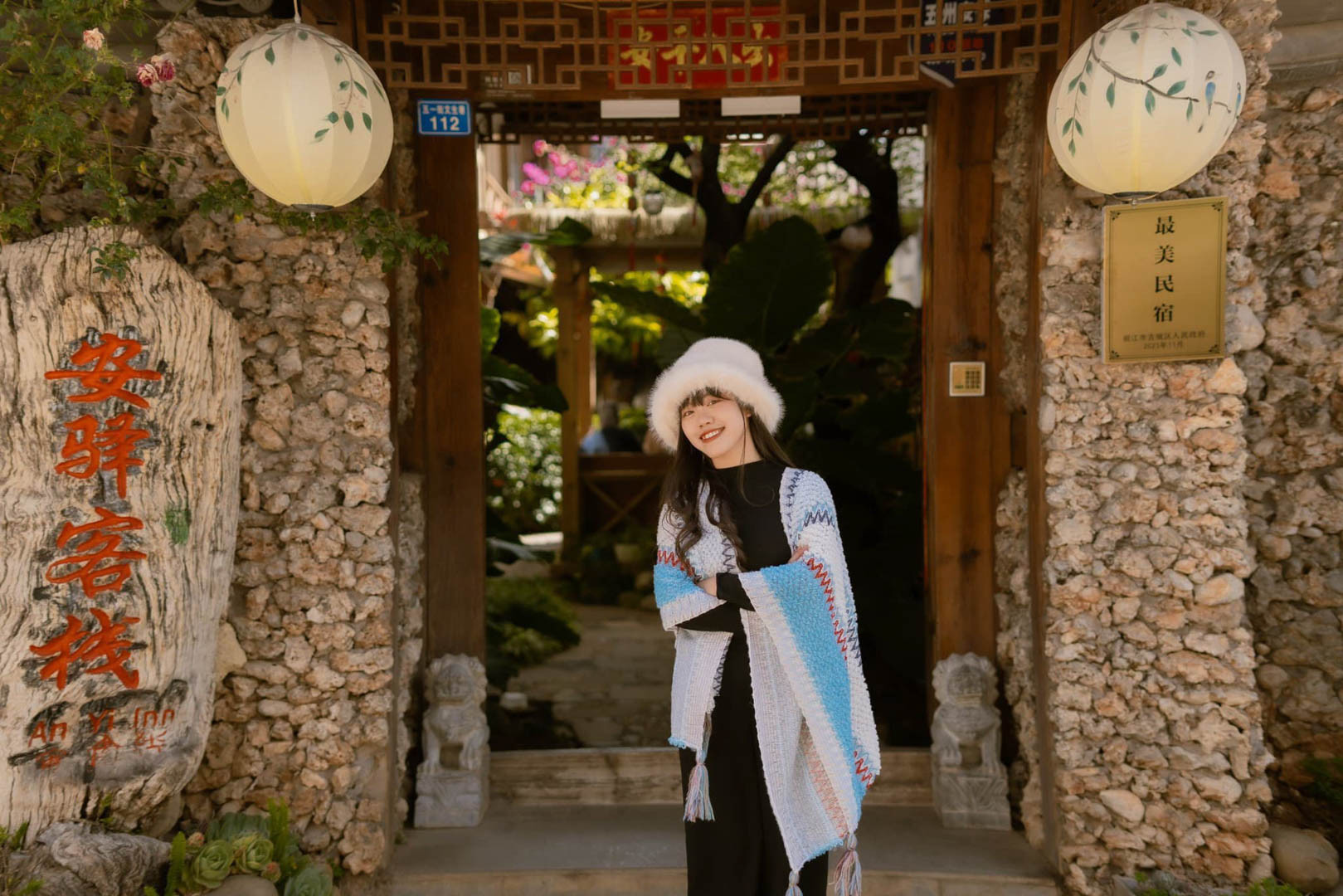
The ancient charm of Lijiang captivated Ms. Nguyet.
Comparing the costs of independent travel versus a packaged tour, Ms. Nguyet found that the former was only slightly cheaper (excluding shopping expenses). However, the freedom to create their itinerary made it worthwhile.
Photos: NVCC



































